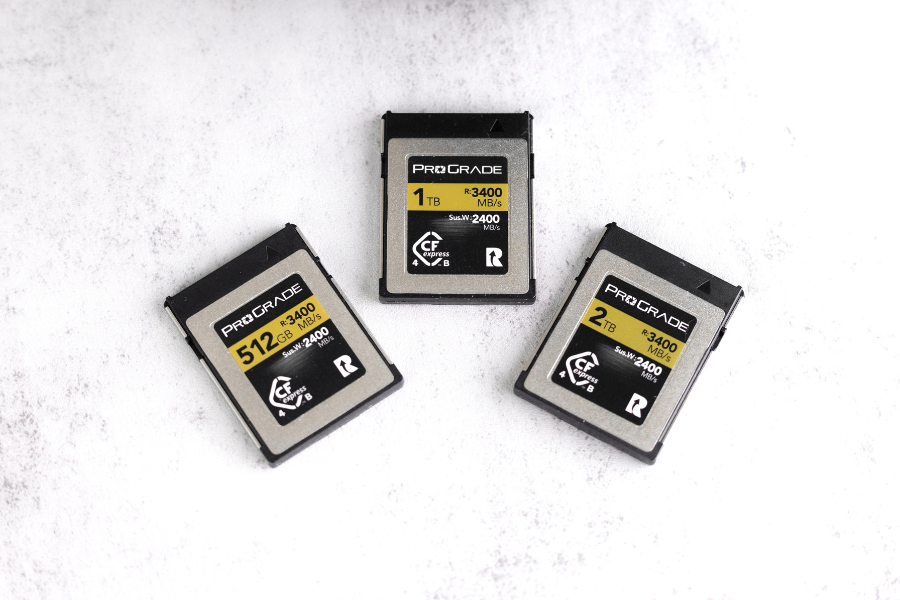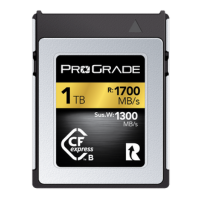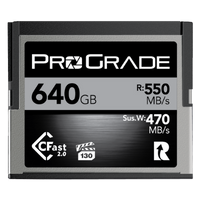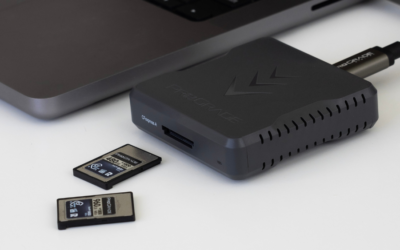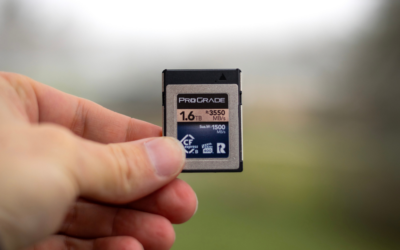In the fast-paced world of professional photography, every moment counts. Capturing that perfect shot or recording critical video footage often hinges on your gear’s speed and reliability. While the camera and lens are undoubtedly essential, one often-overlooked hero in the equation is the memory card.
Memory card speed isn’t just a technical detail for the gear geeks; it’s the lifeblood of your camera’s ability to perform at its peak. The speed of your memory card can significantly impact two important aspects of your craft: burst shooting and continuous recording.
In this article, we’ll delve into the nitty-gritty of memory card speed and its influence on your creative capabilities.
Deciphering Memory Card Speed: A Deep Dive
Since the speed difference of a memory card is most noticeable during data transfers, many shutterbugs – especially the ones not in a hurry to get their images from camera to computer – overlook entirely the aspect that the memory card speed also impacts the camera’s performance.
A faster memory card does indeed expedite the process of transferring your photos and videos to your computer. For instance, using a faster memory card significantly speeds up the process of transferring photos and videos to your computer. To illustrate, let’s compare two types of SDXC cards. A high-speed 64GB SDXC card, like the V90, can transfer data at such a rapid rate that it’s capable of copying the entire contents of the card in just 3 to 4 minutes. In stark contrast, a slower SDXC card, perhaps with a lower speed class, can take considerably longer – around 1 to 2 hours to transfer the same amount of data. This difference is not just substantial; it’s a game-changer in terms of efficiency and time management.
However, the real magic unfolds within your camera itself, making a faster memory card essential for unlocking its full potential.
In the ever-evolving realm of photo- and videography, cameras are reaching new heights of performance. These advancements translate into not only larger image and video file sizes but also a surge in data volume.
Burst Shooting: When Every Millisecond Counts
Traditional cameras relied on a chemical reaction to capture images on film. In contrast, digital cameras feature electronic sensors, each studded with countless light-sensitive diodes. When you press the shutter button to take a photo or commence recording a video, these diodes come to life, capturing the light and translating it into electrical data. In essence, every click of the camera shutter or video recording stores color and light information for each individual pixel on your memory card.
Consider, for instance, the data load when shooting RAW images with a 24-megapixel camera. Your camera needs to capture and save 6,000×4,000 pixels, which equals 24 million pixel values for every photo. Add to that the fact that RAW files are generally 14-bit files with up to 4 trillion colors, and you get why high-quality images are so big. There is just a lot of data to store for every single one of those 24 million pixels.
Now, if you’re bursting 30 RAW images per second, that equates to your camera processing a staggering 720 million pixel values. That’s an immense volume of data, and it doesn’t stop there. Your camera must manage this data flawlessly, even when it’s pouring in continuously, second after second. This is where slower memory cards fall short.
Continuous Recording: Speed as the Backbone
It’s pretty much the same with shooting high-quality video. Whenever you venture into the realm of 4K or 6K video, your memory card must be capable of handling anywhere from 250 million to 582 million pixel values every second (when shooting at 30 frames per second). And, if you’re delving into the incredible world of 8K recording at 30 frames per second, that number soars to an astounding one billion.
In the high-speed photography and continuous recording landscape, your memory card’s write speed becomes an essential factor in determining your camera’s ability to handle these colossal data loads without lag or disruption. To harness the full potential of your camera, it’s not just a question of how quickly you can offload your content—it’s about how efficiently your memory card can capture, process, and save these immense volumes of data in real-time.
Buffer and Throughput: Partners in Seamless Captures
A camera’s buffer is its safeguard against interruptions during high-speed shooting. It’s a temporary storage space within the camera where captured images and videos are held before being written to the memory card. When the camera’s buffer is full, it must wait for the memory card to catch up, which can result in frustrating delays during shooting.
The size of the buffer determines how many images or seconds of video can be captured in rapid succession before the camera needs to pause. A larger buffer can accommodate more data, allowing for extended burst shooting or continuous recording.
The buffer’s synergy with memory card speed is where the magic happens. If your camera’s buffer is generous, but your memory card’s write speed is slow, it’s like having a powerful engine in a car with a clogged exhaust. The buffer fills up quickly, but the slow memory card can’t clear it fast enough, causing the camera to stall.
Conversely, if you have a high-speed memory card but a small buffer, you can shoot in rapid bursts, but you’ll hit the buffer’s limit swiftly, forcing you to wait for it to clear before you can continue.
The key to uninterrupted shooting lies in matching the camera’s buffer size with the memory card’s write speed. When these two components work in harmony, the camera can capture images and video at high speeds, and the memory card can keep up, ensuring a seamless flow of data from the buffer to storage. This synergy is the secret to extended, uninterrupted shooting sessions, whether you’re capturing fast-paced action on the field or recording moments that demand precision and timing.
Memory Card Lineup: Analyzing Speed Across Types
When it comes to memory cards, there’s a diverse array of types to choose from, each with its own speed capabilities. Let’s compare popular memory card types, such as SDXC, CFexpress, and CFast, to help you understand the performance differences and determine which best suits your high-speed photography needs.
SDXC (Secure Digital Extended Capacity): The Workhorse
SDXC memory cards are widely recognized for their versatility and are commonly used in a range of devices, including digital cameras. They come in various speed classes, but for high-speed photography and high-resolution video tasks, it’s essential to focus on the Video Speed Class. Leading Video Speed Class cards, such as SDXC V60 and SDXC V90, offer superior write speeds, making them suitable for burst shooting and high-quality video recording.
CFexpress: The Speed Demon
CFexpress memory cards represent the future of high-speed storage solutions. They’re designed for professionals who demand exceptional performance. CFexpress cards are available in Type A and Type B formats, each with different physical and speed characteristics.
CFexpress Type B: CFexpress Type B cards are the speed demons of the memory card world. They offer unparalleled read and write speeds, with professional-grade cards capable of sustaining a read speed of 3,400MB/s and a write speed of 2,800MB/s. These cards are designed for the most demanding tasks, such as capturing 8K video or shooting in rapid bursts. Their extraordinary performance ensures your camera’s buffer stays clear, allowing for seamless high-speed photography.
CFexpress Type A: CFexpress Type A cards are Type B cards’ smaller and more compact counterparts. Despite their small form factor, these blazing-fast cards still deliver impressive read and write speeds. They are ideally suited for compact mirrorless cameras and offer excellent performance for various high-speed tasks.
CFast: The Robust Solution
CFast memory cards have been a reliable choice for professional photographers for a long time. While not as common as SDXC or CFexpress, CFast cards offer dependable performance for high-speed photography tasks.
ProGrade Digital CFast cards, designed for professional photographers, can sustain write speeds of 470MB/s, making them ideal for continuous shooting and 4K recording.
In summary, the choice of memory card type depends on your specific needs. Important takeaway: not all SDXC, CFexpress, and CFast cards are created equal. If you are a professional handling demanding tasks, you need a memory card capable of delivering unparalleled speed. So, considering merely the compatibility may leave you heavily shorthanded. Choosing the right memory card, however, can sometimes be overwhelming. That’s why we put together this straightforward 3-step guide to help you find the best memory card for your specific use case.
When Speed Falters: Potential Hiccups of Slower Cards
The impact of memory card speed on burst shooting and continuous recording is significant, and even the slightest compromise carries pitfalls that no photographer or videographer can afford. While it might be tempting to settle for slower memory cards, especially to save on costs, doing so can lead to a range of issues.
Imagine you’re photographing a fast-moving subject, like a racing car or a soaring bird. In high-speed burst photography, a slower memory card can’t keep up with your camera’s rapid fire. As a result, your camera’s buffer fills quickly, and it’s forced to pause while the memory card catches up. During this critical moment, you might miss the perfect shot, leaving you with an image captured too late, or worse, not at all.
For videographers, working with slower memory cards poses a different challenge. When shooting 4K video or above and the memory card struggles to keep pace with the stream of data delivered by the camera, it results in dropped frames—those unsightly, jumpy moments in your video. This issue can degrade the overall quality of your footage, making it appear unprofessional and disjointed.
Even worse, when a slow memory card can’t write the data from the camera’s buffer fast enough, the buffer fills up, causing your camera to stop recording altogether. This interruption can disrupt the flow of your video and potentially ruin the continuity of a scene. It’s a complete nightmare for someone trying to tell an entire story in one continuous shot.
Conclusion: Impact of Memory Card Speed on Burst Shooting and Continuous Recording
In short, slower memory cards severely limit the number of images you can burst and the frequency at which you can take shots. This can lead to missed opportunities, reduced video quality, frustrating buffer lag, and limited creativity. All that is on top of extended transfer times. To avoid these pitfalls, it’s important to invest in memory cards that align with your camera’s capabilities and your creative vision, ensuring your work is never hindered by subpar performance.
In the world of photography and videography, every moment is a potential masterpiece. Don’t let a slow memory card stand between you and your creative vision. Elevate your burst shooting and continuous recording to new heights of excellence with ProGrade Digital Memory Cards, built for pros like you. Your camera is ready—let your memory card keep up with the magic of your craft.
